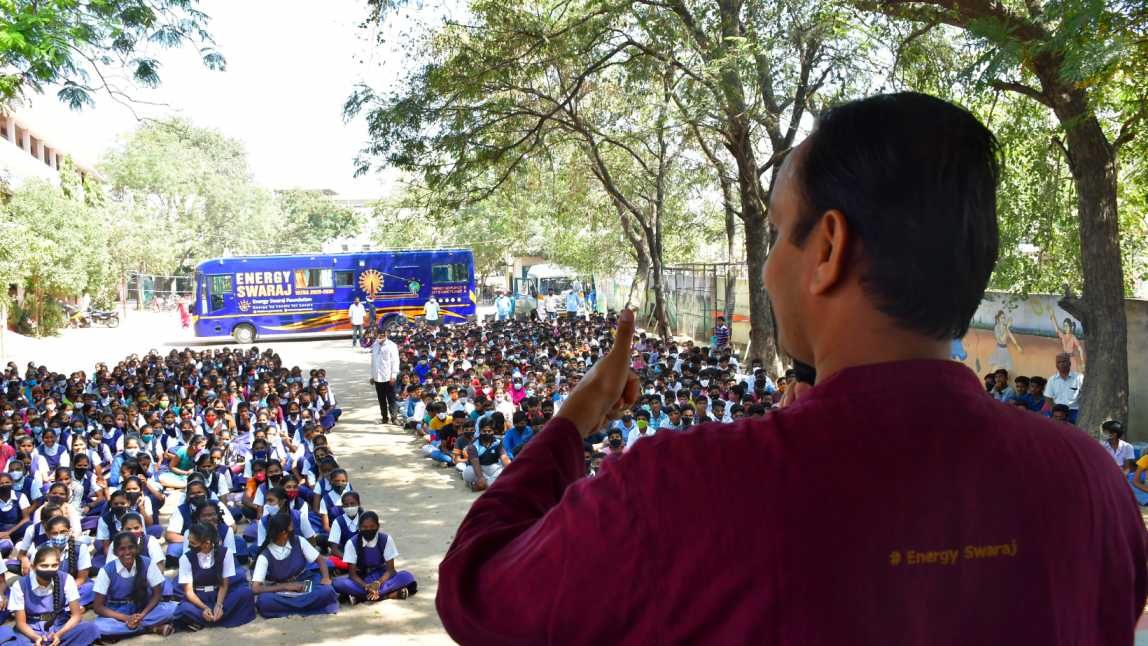NEW DELHI: Four years ago, at the height of his restlessness over the growing threat of climate change on the planet, Chetan Singh Solanki decided to embark on a journey to spark a change for the environment.
Solanki launched the energy swaraj journey in 2020 to inspire energy independence across the world, campaigning with the motto “Energy by Locals for Locals.”
He told Arab News: “I want to restore the environmental balance that we are already losing, and I want to do it at a global level because it is not a problem of one state or one country — it is a problem of the entire world.”
A professor at the Indian Institute of Technology Bombay’s department of energy science and engineering, Solanki takes inspiration from Mahatma Gandhi, the leader of India’s freedom movement who used nonviolent resistance as a tool for mass action.
Solanki believes in replicating a similar strategy to boost energy literacy among the people and inspire them to use cleaner energy as an alternative power source.
“It is the wrong energy that has created the problem (and) it is the right energy that will solve the problem. Clean energy and solar energy and to bring everybody on board is why I started this journey,” Solanki said. “My vision is aligned with Mahatma Gandhi’s vision of gram swaraj (village self-rule). I emphasize responsible energy consumption and localized production.”
The campaign was designed to be impactful and adopted by the masses.
“This is designed to trigger the mind that we all can be part of the climate solution. It is not rocket science — rich and poor, young and old, everybody can be part of it,” he added.

Chetan Singh Solanki talks to students as part of his nationwide journey to spur climate movement in this photo shared on June 8, 2024. (Energy Swaraj)
Through his journey, Solanki has earned the nickname “Solar Gandhi,” having covered 56,000 km on his solar-powered bus, which is equipped with essential amenities including an air-conditioned bedroom, office space, refrigerator and a working kitchen.
The vehicle is an “innovative mobile abode” that symbolizes his aspiration “for a forthcoming world driven by sustainable energy sources,” he said, adding that he plans to continue the nationwide journey until December 2030.
To him, it was clear that world governments “have not done enough,” despite annual climate conferences that are purported to address critical environmental issues.
“The business-as-usual approaches are not working nationally and internationally, and therefore the solution lies in becoming sensitive to planet Earth and its capacity to generate or regenerate,” he said.
Since his journey started in late 2020, Solanki said the campaign has been well received.
“I think there are good things happening and response has been good,” he said. “Energy literacy is the first step towards climate correction.”



























